

|
Marius Michel's 1880 book, La Reliure Française (from the invention of printing to the end of the 18th century), is one of the best books of it's kind written by a man who knew bookbinding inside and out because he was himself a master of the craft. He devotes a good part of this work to the art of gold tooling and illustrates the various styles and motifs that have appeared from its first beginnings in the 16th century. (France) There are 22 full page or double page plates that were produced using a process known as heliogravure by E. Charreyre and 10 color, chromo-typographie plates produced by L. Danel, a Lille. More than 150 years ago, heliogravure produced a better image quality than is available today using industrial methods such as offset, letterpress (click here to learn more about heliogravure) Below I have reproduced one of the double plates from this book (Planche XXII), my copy is a pdf and the center of the plate is missing. You can also see this plate (and the whole book) on the internet and their copy is also missing the center but this is not so important. What I want to know is who was the binder or at least who made this elaborate dentelle? |
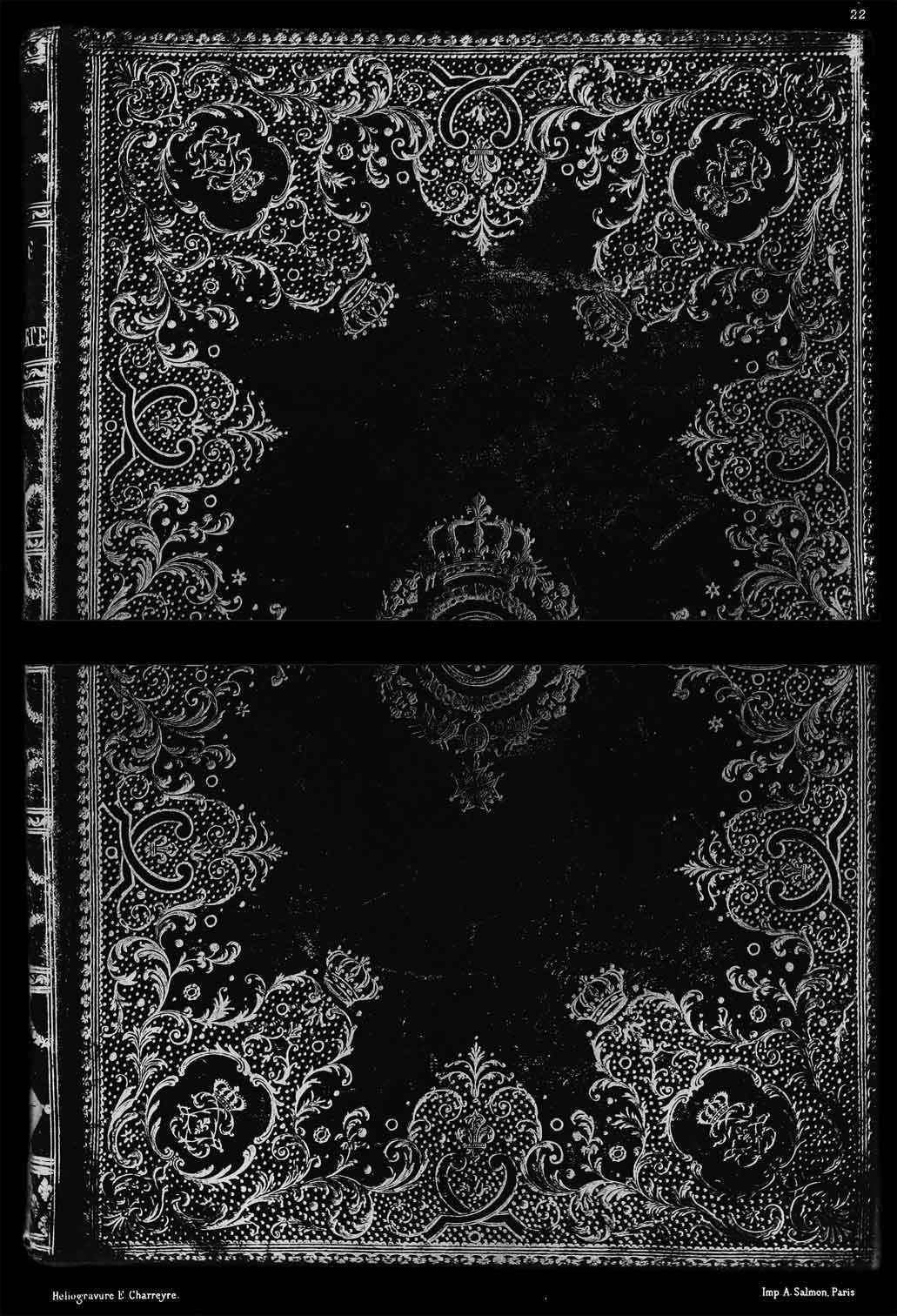
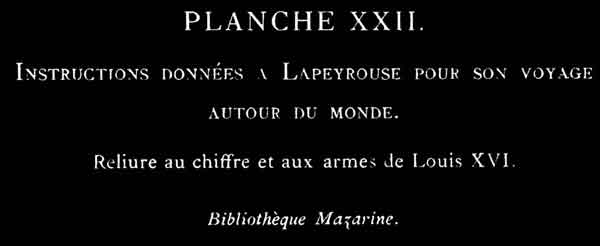
| Here the text where Michel mentions this binding, (that can also be found here). |
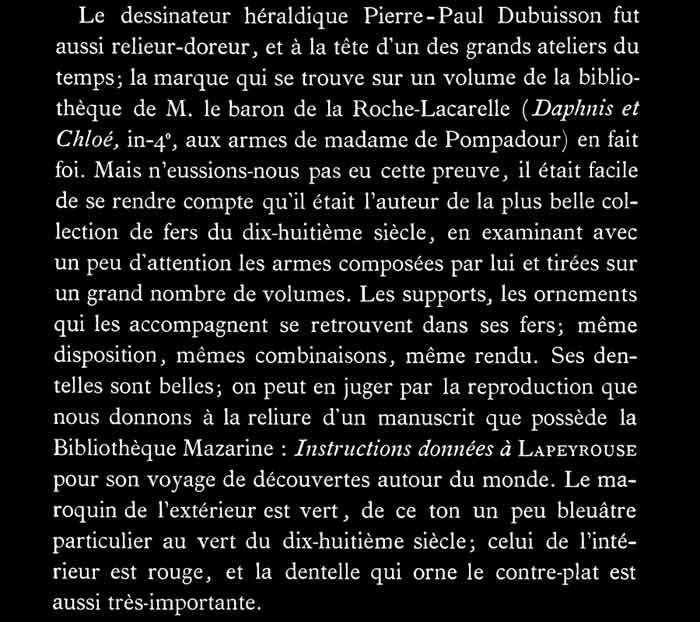
|
In researching the publication within this binding: Instructions données
à Lapeyrouse pour son voyage de découvertes autour du monde we find that the book was written by the King himself, Louis XVI in 1785, Ce prince eut toutes les vertus de l'homme privé; mais il manqua de fermeté, de résolution, peut être même quelquefois de franchise. Il avait de l'instruction, surtout en histoire et en géographie; on lui attribue quelques ouvrages; il rédigea de sa propre main les instructions données à La Pérouse (1785). by this time Dubuisson was long in the grave having passed away in 1762, Louis Douceur died in 1769, Derome died in 1788, but as we don't see any Derome tools here, we need to find another candidate.. If you are wondering why I am so keen to know the identity of this binder it is because he appears to have been one of the best binders of the century, In searching for bindings bearing the same tools as found on the Marius Michel example shown above, I found many and some are very impressive, and often they are decorated with the armories of royalty. Perhaps he was a royal binder to Louis XV and XVI. First, let us look at a few of the tools that will help us identify this artist. |
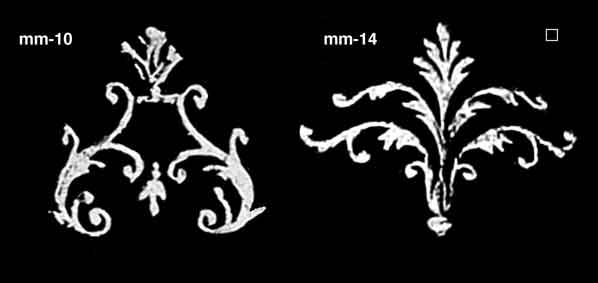
| In Comparative Diagram 1, I show two imprints that caught my attention right away and it was by looking for these imprints that I was able to find many more bindings by this binder who I will call provisionally the "MM binder" and all imprints cataloged as mm-n. However last week I discovered by a fortunate coincidence a binding in the British Library Database of Bookbindings, where these two tools have been used almost exclusively. |
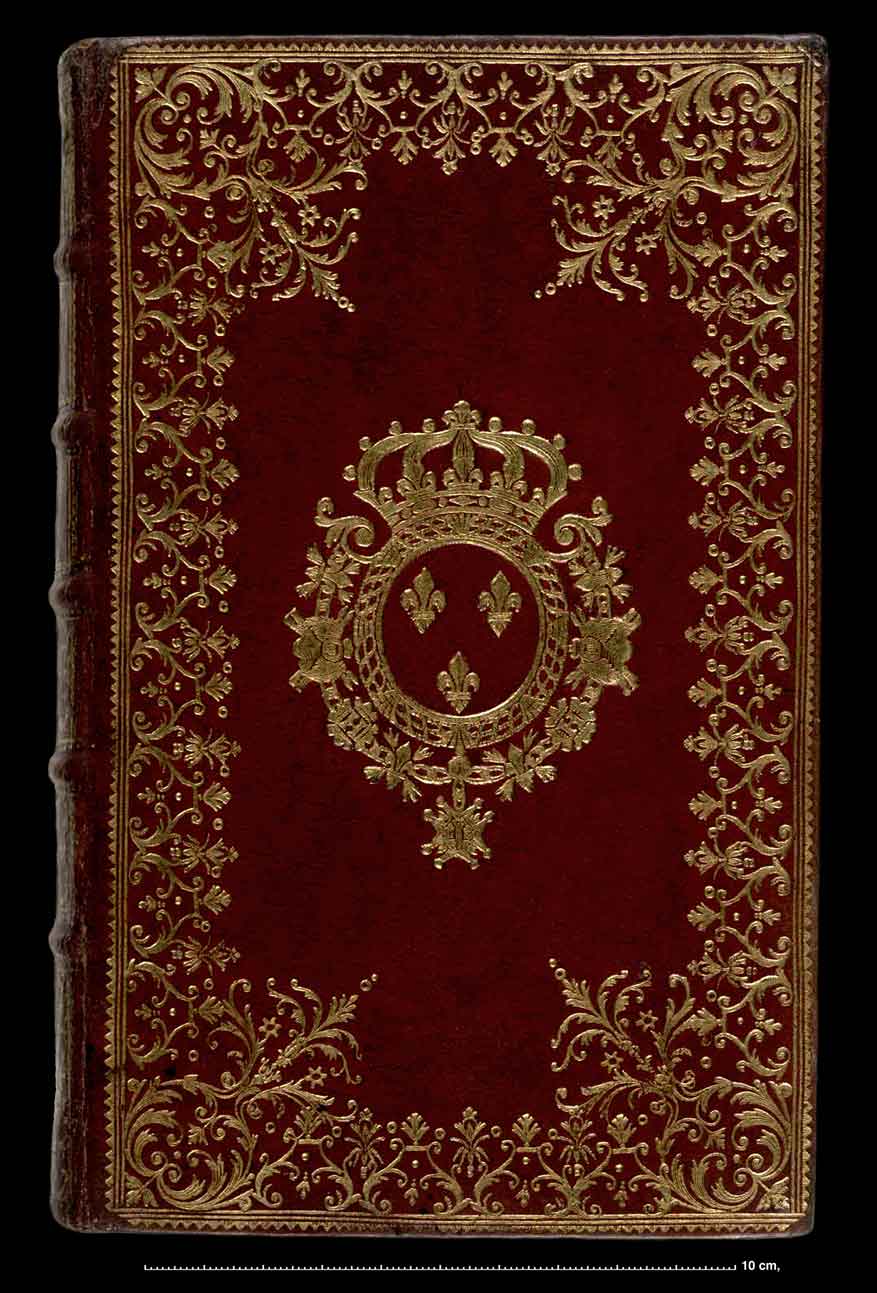
| The next binding I want to present is item number 289 from Livres dans de Riches Reliures, Librairie Damascène Morgand, Paris, bookseller's catalogue, 1910. 95 pages, 50 plates. 378 items. The collection has been catalogued by the distinguished French bibliophile Édouard Rahir who had taken over Damascène Morgand's firm in 1897. I have previously referred to this as Rahir's 1910 catalogue, the plates in this are the best that I have yet found, perhaps produced using heiliogravure methods, and can be enlarged to 600 dpi without significant image loss. This is very important for our work here as I am going to extract an imprint that I will enlarge in a diagram below, identifying this imprint is vitally important in our search for more imprints and bindings by the MM binder. |
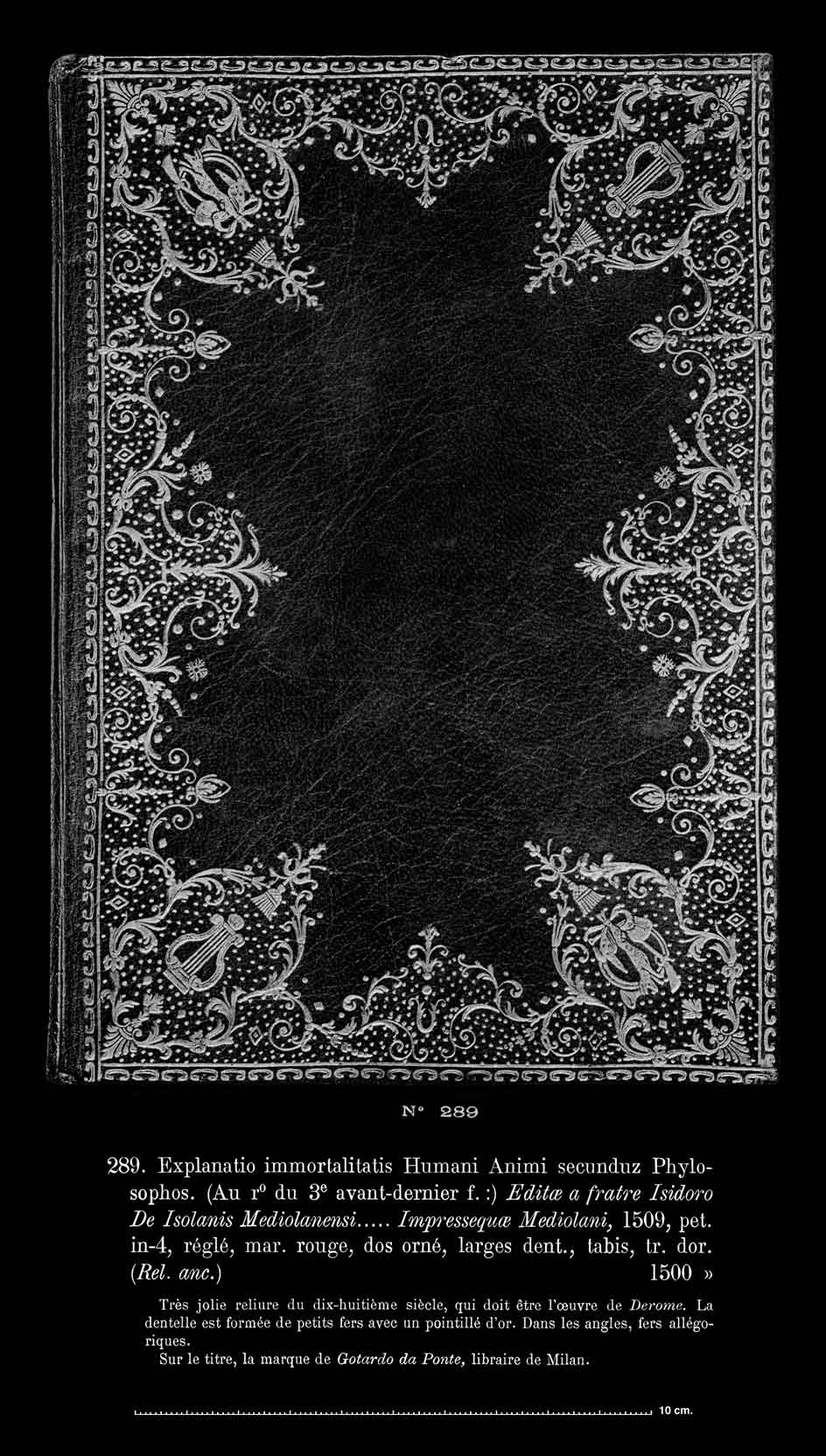
| We can see that our two identifying imprints, shown above as mm-10 and mm-14, are found right in the middle of the 289 dentelle, I want to point out now another imprint that will be very useful in finding more bindings with identical imprints. Shown below in Comparative Diagram 2, as imprint mm-2 compared with the Dubuisson form of the same tool, pd-2. Both have been reproduced at the same scale, the small white square = 1 x 1 mm. These imprints are often found in the corner of the dentelle, Dubuisson, Derome, Jubert and other binders each with their specific form which is often hard to identify, but once you know them identifying the binder becomes a simple matter. |


| In Comparative Diagram 3, I show an enlargement of the imprint mm-2; the green arrows indicating faint lines that cross horizontally the crown of the imprintl the red arrows indicate crossing grooves that are more or less visable, however as is shown by the difference between the upper and lower imprint, the direction that the light strikes the imprint can make a big differencel he blue arrow indicating a collar of six beadsl the yellow arrow indicating a groove or line that may be accidental as it is not oriented centrally as one would expect. On the next page we are going to see how these characteristics may be very useful. |
| information about the author | visit cyclopaedia.org |